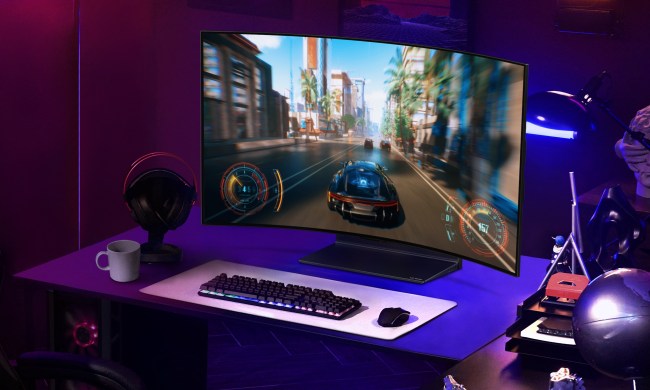“If you've been dying to dig up your old cassettes for a trip down analog memory lane, the Fiio CP13 is a player forged in pure nostalgia.”
- Beautiful design and build
- USB-C charging
- 13-hour playback
- Satisfying mechanical playback
- No on-board EQ
- No auto-stop when fast-forwarding and rewinding
Digging deep into my basement’s storage space always feels like I’m rummaging through Raiders of the Lost Ark‘s giant relic warehouse. I’ve got shelves of bins and boxes stacked to the ceiling containing priceless artifacts, damning evidence of my past hair crimes, and ghosts of past lives. What I was looking for, though, is far more precious than any Ark. I needed my old cassettes.
As a card-carrying vinyl lover (and Gen Xer), I totally get the nostalgic joy that can be derived from walking down analog memory lane. So when the audio gear makers at Fiio reached out with the chance to check out its new Walkman-like portable cassette player, the adorable $100 CP13, and take my old tapes for a spin, I obviously grabbed my fedora and bullwhip. Here are my thoughts.

If your Sony Sports Walkman was a constant companion on long road trips, bus rides, or just hanging out in your room with your Alyssa Milano and Lamborghini Countach posters, then the Fiio CP13 is going to fire on all cylinders. OK, it’s not lemon yellow (Fiio’s obviously not trying to rip off Sony’s iconic player). Instead the CP13 dons a more sophisticated and minimalist design, which I really like — especially the transparent review unit Fiio sent me that lets you see the playing cassette in all its retro glory.
If you do prefer a splash of color, the CP13 also comes in smart-looking Red-and-Silver, Sky Blue, and White-and-Black options, all with a matte aluminum body that feels premium. But design-wise, that’s about all the frills you can expect. Make no mistake, the Fiio CP13 is a basic portable cassette player that does nothing but play cassettes — and that is fantastic.
The specs
| Price | $100 |
| Colors | Sky blue/black, white/red, silver |
| Weight | 10.93 ounces |
| Output | 3.5mm |
| Battery | 1,800 mAh, 13 hours runtime |
| Charging | USB-C, 3 hours recharge |

About the size of, um, a Walkman, the rectangular CP13 measures 4.7 inches by 3.4 inches by 1.25 inches and weighs just 11 ounces. (An iPhone 15 Pro, for comparison, is 6.6 ounces.) And while it doesn’t fit in your back pocket like a phone, it doesn’t feel too big in your hand and is well-suited for a windbreaker jacket pocket, hip sack, or backpack.
Its controls are simple: four basic buttons line the top (stop, rewind, fast-forward, and play), and I can’t tell you how satisfying their tactile resistance and mechanical clicks are to experience — the clackety feeling is instantly nostalgic as you snap between FF and play to queue up the next song.
On the side, you’ll find a small volume control dial, a 3.5 mm headphone input, and a USB-C port for charging because, praise be, there is no fumbling with AA batteries here. The CP13 has its old -chool predecessors beat with the inclusion of a built-in 1,800 mAh battery that delivers up to 13 hours of playback on a charge. It’s also a nice touch that it comes with a charging cable, too.
You can tell that Fiio knew what it was doing in terms of the design of the CP13. We’re talking little touches like getting the stiffness of the cassette door right so it snaps closed after sliding a tape in, but isn’t so easy to open that your tapes come flying out when you’re walking or jogging. Nailed it.
Fiio has also seen fit to give the CP13 a few upgrades from the days of Walkmen past, giving it a higher 4.3-volt motor power supply and a more modern speed control circuit, as well as an oversized copper flywheel that Fiio says reduces wow and flutter (aka, frequency wobble), which keeps playback quieter.
There’s not much to say about using the Fiio CP13 except that it’s dead simple: slide a cassette in, close the door, and press play. If your cassettes are anything like mine, they’re 25 years old and all need to be rewound, which is one part of the nostalgia that my 2024 brain could do without. And no, it doesn’t go faster if you turn the volume down or plug it in — I checked.
A few of nice-to-haves would have been an auto-stop feature when fast-forwarding and rewinding (when it hits the end, the motor keeps running), at least some basic onboard EQ, and maybe a bass boost. But I can see why Fiio would just want to keep things simple (and at a decent price).

I tested the CP13 with a pair of solid Sennheiser HD 560S open-back headphones, which have a great neutral and balanced sound. The CP13 powered them just fine, with the volume getting loud enough to be uncomfortable.
As far as how the Fiio CP13 sounds, however, the short version is that it sounds OK. But there are a few caveats.
First, how good the CP13 sounds depends largely on the quality of the cassettes you’re playing. In this case, my collection of Depeche Mode, The Smiths, Tears for Fears, and New Order tapes have been very well loved. They’ve also been sitting in a shoebox in my basement for decades, and the result is much less definition and clarity, and the occasional warble and pop.

Second, there is no on-board EQ like some Walkmen of old, so there’s no way to improve things. I did, however, connect the CP13 to my old Marantz stereo receiver, which allowed me to add low end and dial-in the mids and highs to an extent — it actually improved the sound substantially, especially coming out of a decent pair of speakers.
On the flip side, since cassettes are back in vogue, a vintage arts market in Toronto I went to recently was selling new reissue cassettes of some Canadian indie bands, so I grabbed a copy of Thrush Hermit‘s excellent 1999 record Clayton Park. The brand-new magnetic tape sounded fantastic on the CP13. There was much less noise, the soundstage was big and full, and the fidelity was clearly not marred by decades of degradation — the lifespan of cassettes is roughly 30 years.

But let’s be honest, the Fiio CP13 wasn’t created for new music or to impress audiophiles. It’s here largely to pull on the nostalgia strings of those of a, shall we say, certain vintage (present company included). And as far as I’m concerned, it has fulfilled its duty.
From the minute I heard that familiar “booowiiiiiip” ascending test tone at the beginning of my beaten-up copy of The Queen is Dead, I was hooked and ready to settle in to an evening of cassette magic. And that’s worth heaps more than the $100 the Fiio CP13 will set you back. If you have cases of old tapes lying around, this tape player is for you.









